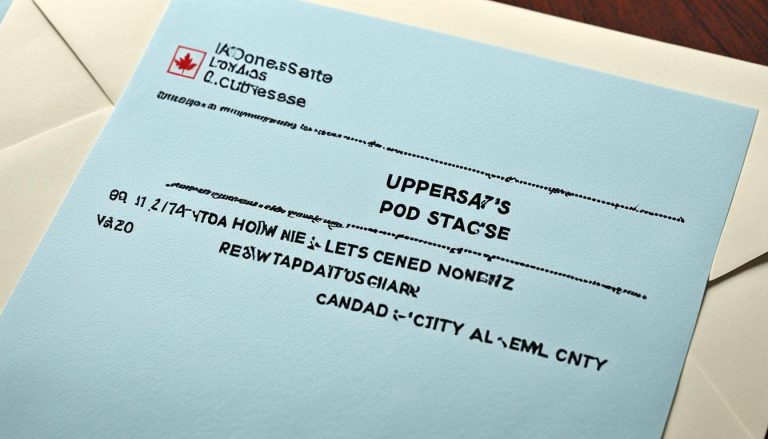Are you planning a trip and wondering if both parents need to be present for a child passport application in Canada? It’s a common question, especially for separated, divorced, or single-parent households. The Government of Canada has strict yet logical rules in place to protect the safety and rights of children when issuing passports.
Applying for a passport for a child under 16 comes with clear legal expectations. These include proving parental authority, citizenship, and consent. The process also ensures that one parent cannot obtain a passport without the other’s knowledge in certain custody arrangements.
This blog covers everything you need to know about parental presence, eligibility, required documents, exceptional circumstances, and more. Whether you’re a legal guardian or one of the parents, understanding your responsibilities can prevent delays or rejections during the passport application process. Let’s explore this vital topic and clarify every detail.
Why Is Parental Presence Important When Applying for a Child Passport?

Parental presence during a child’s passport application is a safeguard designed to ensure the child’s best interest and prevent unauthorized travel or abduction. It reinforces legal accountability and validates that both parents or legal guardians are in agreement when requesting international travel documentation for a child.
Parental presence is critical in cases involving:
- Joint custody or decision-making responsibilities
- Legal guardianship arrangements
- High-conflict or separated parenting situations
- Concerns about child safety or cross-border travel
According to Canadian passport regulations, both parents must usually sign the application for children aged 15 and younger. This consent is not just procedural but necessary to uphold Canadian family and legal standards. In-person presence at a passport office may also be required, depending on the application method.
If applying in person, both parents might need to appear or provide verifiable documentation such as signed consent forms. In some cases, one parent may apply if specific legal conditions are met, but this must be documented clearly to avoid application denial.
These rules ensure a transparent, protective approach to issuing travel documents for minors, supporting both the rights of the parents and the safety of the child. This emphasis on dual consent builds trust and integrity in the process.
Who Is Eligible to Apply for a Child Passport?
Understanding who is legally allowed to apply for a child passport in Canada is essential. The eligibility rules are structured to ensure that only those with verified parental or legal authority can make passport requests on behalf of a child.
In Canada, the following individuals are eligible to apply for a child’s passport:
- One of the child’s parents, if they are not separated or divorced
- The parent with custody or decision-making responsibility in separated or divorced situations
- A legally recognized guardian appointed through a court or legal system
The eligibility is verified through legal documents such as custody orders, divorce judgments, or guardianship agreements. Each parent or guardian must sign the application form. Their involvement confirms approval for the child to obtain a travel document.
Additional considerations include:
- If the parents have joint custody, either one can apply with proper documentation.
- If a guardian is applying, they must include proof of legal guardianship issued by a court.
- Step-parents or extended family members are not automatically eligible unless granted legal guardianship.
Verifying the eligibility of the applicant is one of the first checks conducted during the processing of a child’s passport. It is crucial to submit all necessary legal paperwork upfront to avoid processing delays.
What Documents Are Required for a Child Passport Application?

When applying for a child’s passport, you need to submit multiple supporting documents. These documents help establish the child’s identity, citizenship, parental relationship, and legal authority. All submissions must be accurate, original (or as otherwise permitted), and complete. Here’s a detailed breakdown of what you need to submit.
Proof of Citizenship
You must provide original proof of Canadian citizenship for the child. The acceptable documents vary based on whether the child was born in Canada or abroad.
- If born in canada, submit a provincial or territorial birth certificate.
- If born outside canada, submit a Canadian citizenship certificate.
- A paper certificate issued on or before January 31, 2012 must be original.
- For certificates issued after February 1, 2012 or with a serial number starting with “K” or “X”, a copy or original is accepted.
- E-certificates must be printed in paper form.
- Laminated documents are not accepted unless laminated by the government office that issued them.
For documents that are void if laminated or have altered security features, a replacement document must be obtained from the appropriate authority.
Proof of Parentage
As of November 5, 2024, proof of parentage is mandatory in every child passport application, regardless of whether the child has had a passport before.
Acceptable documents include:
- A long-form birth certificate from a Canadian province or territory showing both parents’ names.
- A court-issued adoption order naming adoptive parents.
- A foreign birth certificate that lists the parents.
If a parent’s last name on the application differs from that on the parentage proof, supporting documents like a marriage certificate, name change certificate, or a common-law relationship certificate must be provided to explain the discrepancy.
Custody or Legal Decision-Making Documents
Legal custody arrangements must be submitted when applicable. These documents are crucial when parents are separated, divorced, or under special legal circumstances.
Relevant documents include:
- Court orders detailing custody or decision-making authority.
- Divorce judgments that outline parenting arrangements or mobility terms.
- Agreements that cover access, parenting time, or restrictions on travel.
These documents help determine who has the legal authority to apply for a passport. They are especially important if only one parent is applying or if there is any form of dispute or lack of contact between the parents.
All the documents listed must be current and match the application information to avoid any mismatch or application refusal. When in doubt, include all relevant records to support your case.
What Happens If One Parent Cannot Be Present?
In certain situations, both parents cannot be physically present during the passport application process. However, this does not always mean that the process stops. Canada’s passport rules provide options in such cases while still upholding legal and safety standards.
If one parent cannot be present, they must still provide written consent, usually through a completed and signed form that accompanies the application. This consent must be authentic and uncoerced. It ensures the other parent is fully aware of the application.
Acceptable situations where one parent might not be physically available:
- They are working or living in a different location.
- There are valid legal restrictions on contact or communication.
- One parent has sole custody or decision-making authority.
In such cases, make sure to submit:
- A signed and dated consent form.
- Legal documents verifying custody or decision-making rights.
- Proof of why the absent parent cannot attend.
Failing to provide proper documentation or signatures will result in application delays or denials. It’s best to plan ahead and ensure all required forms are properly signed and attached.
Are Both Parents Always Contacted During the Application Process?

Canadian passport authorities reserve the right to contact both parents or legal guardians listed on the application. This step is taken seriously to ensure transparency, shared parental awareness, and the prevention of unauthorized child travel.
Even if both parents are not present at the time of application, the authorities may still contact the absent parent to confirm consent or clarify legal rights. This check is especially common in cases of separation, divorce, or ongoing legal disputes.
What if One Parent Cannot Be Located?
If one parent’s whereabouts are unknown, the applying parent must provide an explanation and legal evidence supporting sole authority.
In such cases:
- A court order granting sole custody or decision-making responsibility must be included.
- Any efforts made to locate the other parent should be documented.
- If legal processes are underway to gain custody, they must be referenced or attached.
In extreme cases where no resolution is available, the applicant can contact the passport office directly to understand what additional steps may be needed. Lack of response or uncertainty from one parent without legal backup can result in application denial.
What if One Parent is Deceased or Has Lost Custody?
If one parent is deceased, a death certificate must be included. This eliminates the requirement for dual signatures. In cases where a parent has lost custody or has been legally restricted from parental responsibilities, court orders must be attached to demonstrate this. This includes cases where a parent is not allowed to make legal or travel decisions on behalf of the child.
In both situations, the remaining parent or guardian will be treated as having full decision-making authority, simplifying the application process. However, thorough documentation is still required for verification.
The authorities always prioritize the safety of the child and legal compliance. This is why all parties involved are thoroughly reviewed before a passport is issued.
How Can Guardians Apply on Behalf of a Child?
Legal guardians can apply for a child’s passport if they have been officially appointed and can prove their status. The application process for a guardian is similar to that of a parent but includes additional legal documentation.
Guardians must provide:
- A valid guardianship order issued by a Canadian court or authority.
- All the same documents required of parents, including proof of citizenship and parentage.
- A signed passport application form.
The guardian’s name must appear on the legal document establishing their authority to act on behalf of the child. Guardians who are not legally registered will not be permitted to proceed with the application.
In cases where both biological parents are deceased or unfit to parent, the guardian’s legal proof becomes the central element of the application. If only one parent is deceased and the other is incapable, a court-issued guardianship certificate is mandatory.
Proper documentation and clear communication with passport authorities help ensure a smooth and timely application process for legal guardians.
How Long Is a Child Passport Valid and Can It Be Renewed?

Child passports in Canada are valid for a maximum of five years. Regardless of when the passport was issued, it remains valid until its expiration date, even if the child turns 16 during that period. This ensures that families can travel without worrying about sudden documentation lapses.
What Happens When the Child Turns 16?
Once a child turns 16, they are no longer eligible for a child passport. They must apply for an adult passport, which has its own set of requirements and a longer validity period.
The transition is straightforward. Even if the child has an active child passport, it cannot be renewed into an adult one. A brand-new adult passport application must be submitted with its respective forms and fees.
Why Can’t a Child Passport Be Renewed?
Canada does not allow child passport renewals. Each time a child needs a passport, a full application must be submitted. This includes all updated documents such as citizenship, custody arrangements, and proof of parentage.
The renewal restriction is in place to ensure updated verification of the child’s identity, legal situation, and parental consent. It also helps prevent misuse of expired or outdated documentation, especially in custody or family dispute situations.
This rule protects the child’s rights and ensures both parents remain involved in their international mobility decisions. Always plan ahead if your child’s passport is expiring and ensure all paperwork is current.
How to Apply for a Child Passport in Canada?

Applying for a child passport in Canada involves a few clearly defined steps. These steps are meant to ensure accuracy, prevent fraud, and confirm that both parents or guardians are involved in the decision-making process.
Step 1: Complete the Application Form
- Use the appropriate application form for children under 16.
- Include both parents’ or guardians’ information.
- Ensure all sections are filled correctly to avoid rejections.
Step 2: Gather Required Documents
- Proof of citizenship (birth certificate or citizenship certificate)
- Proof of parentage
- Custody documents if applicable
- Valid government-issued ID for both parents or guardians
Step 3: Obtain Both Signatures
- Both parents or guardians must sign the application.
- If one parent cannot sign, provide a consent letter or legal documentation showing sole authority.
Step 4: Submit the Application
- Submit in person at a passport office or by mail.
- Original documents will be returned, possibly in a separate package.
- Ensure that all documents are securely packed and complete.
Step 5: Pay the Required Fees
- Fees vary depending on the type of passport service.
- Expedited processing may cost more.
Step 6: Track and Receive the Passport
- You may track your application online.
- The passport will be delivered by mail or collected in person based on your chosen method.
Completing each step carefully ensures a smooth process. Missing documents or signatures are the most common reasons for delays, so double-check before submission.
Conclusion
When applying for a child passport in Canada, both parents typically need to be involved, either in person or through valid legal consent. This process ensures that the child’s safety and parental rights are respected.
Whether you’re a parent or a legal guardian, having the correct documentation and understanding your responsibilities can make the application smoother and quicker.
Always stay informed and prepared to meet the requirements as outlined in the latest guidelines. That way, you protect your child’s right to travel while meeting Canada’s legal and administrative standards.
FAQs
Can a single parent apply for a child passport without the other parent?
Yes, if they have sole custody or legal documentation that gives them full decision-making responsibility.
What documents prove custody or parental rights?
Court orders, divorce judgments, or official custody agreements are accepted as proof.
What if I can’t locate the other parent?
You must provide legal evidence of sole custody and explain efforts made to locate them.
Does my child need to attend the passport appointment?
Not typically, unless requested by the passport authority during special circumstances.
Can legal guardians apply without biological parents?
Yes, but they must provide court-issued proof of legal guardianship.
Is a notarized letter enough for one-parent applications?
It depends on the case, but a signed consent form with legal documents is often required.
What if my child’s surname differs from mine on the application?
You’ll need to submit supporting documents like a marriage or name change certificate.




